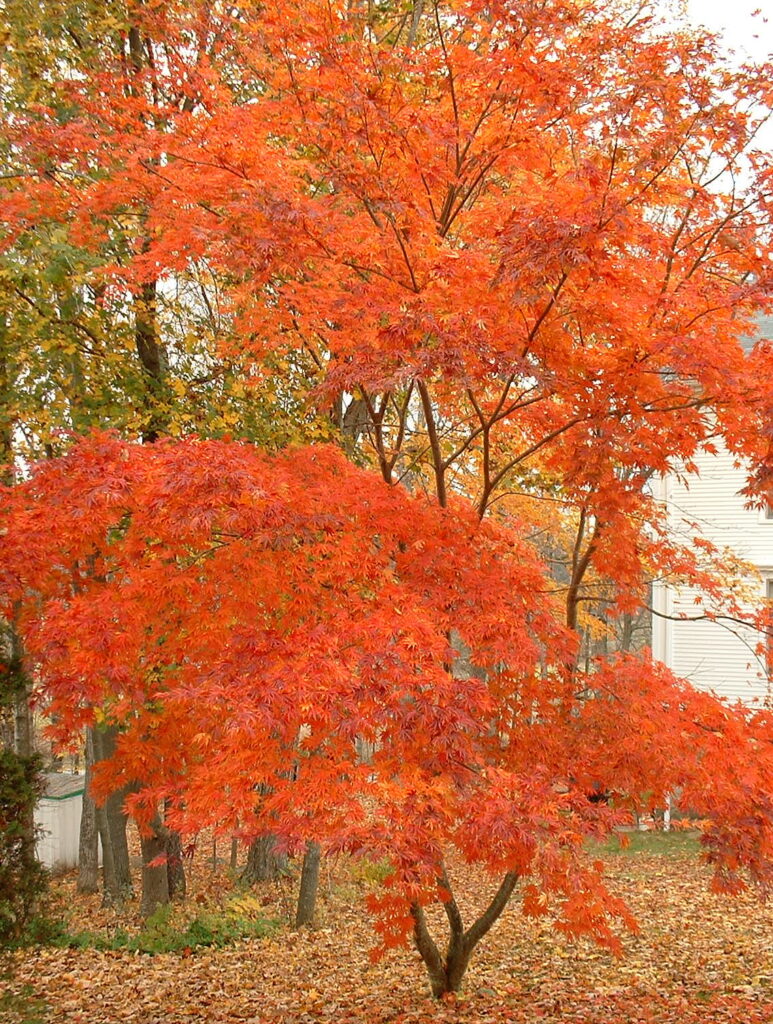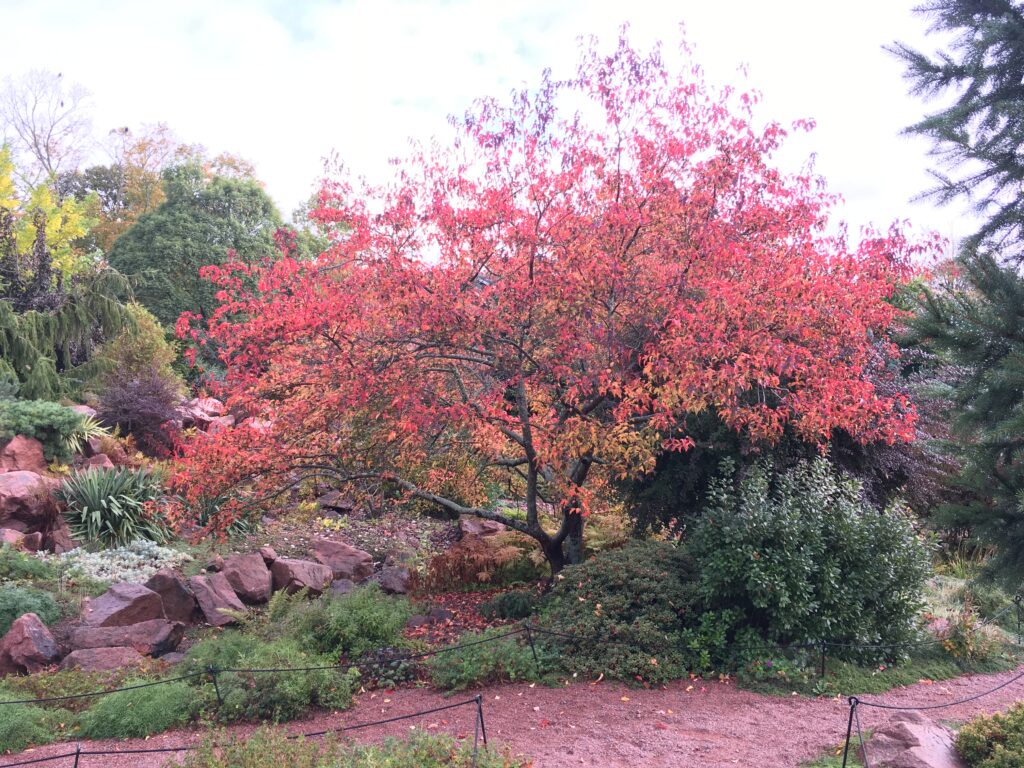Are you concerned that deer might be eyeing your Japanese maples as their next meal? While deer do eat Japanese maples, they don’t prefer them over other plants.
That doesn’t mean your beautiful trees are safe from these browsing animals, though!.
Understanding deer feeding habits and knowing how to protect your Japanese maples from deer can be the key to maintaining their beauty and health.

Deer are unpredictable, and their eating habits can vary depending on the availability of other food sources.
If deer are common in your area, you may need to take steps to safeguard your Japanese maples.
By understanding these methods, you’ll help ensure your Japanese maples remain beautiful and healthy.
Do Deer Eat Japanese Maples?
Deer are known to eat a variety of plants, and Japanese maples are no exception.
They might not be the first choice for deer, but when food is scarce, deer will nibble on Japanese maple trees.
Young and newly planted Japanese maples, like those commonly found in the USA, are particularly susceptible to deer browsing.
Deer tend to go for tender leaves, buds, and twigs.
If you have varieties like Acer palmatum ‘Bloodgood’ or Acer palmatum ‘Osakazuki’, they are at risk too.
Deer will graze on the foliage, potentially causing damage to the trees.
Here’s a quick breakdown:
- Leaves: Often targeted by deer.
- Twigs and buds: Eaten by curious fawns or when food is lacking.
- Bark: Less commonly eaten, but not immune.
To protect your trees, consider using deer repellents like lavender or rosemary which emit smells that deer dislike.
Another method is spraying water to scare them away from your Japanese maple trees.
Dwarf Japanese maples are also at risk, especially because they’re closer to the ground and more accessible for deer.
Remember, while Japanese maples have some resistance, they are not entirely deer-proof.
Always take preventive measures to protect your Japanese maple from deer.
Are Japanese Maples Deer Resistant?

Japanese maples are sometimes thought to be deer-resistant, but this is not always the case. Deer will eat many plants, including Japanese maples, if other food sources are scarce.
Young and newly planted Japanese maples are particularly at risk. Deer, especially curious fawns, may nibble on the leaves, twigs, and bark. This can cause damage to your trees.
Ways to Protect Your Japanese Maples:
- Plant strong-scented plants like lavender, rosemary, or honeysuckle nearby.
- Use a water hose to spray deer when they approach.
- Install physical barriers like fences.
Benefits of Planting Deer-Resistant Plants:
- They can help in reducing the chances of deer munching on your Japanese maples.
- They provide a natural way to deter deer from your garden.
How to Keep Deer From Eating Japanese Maples
To protect your Japanese maples from deer, you have several effective strategies at your disposal.
1. Install Physical Barriers
Fencing is one of the most reliable methods. A deer fence at least 8 feet tall can prevent deer from reaching your trees. You can also use wire mesh around individual trees.
2. Use Deer Repellents
Deer repellents come in many forms—liquid, granular, and chemical.
Spray repellents directly onto your Japanese maples. You can find commercial repellents at garden stores.
3. Homemade Repellents
Consider garlic spray, which is simply garlic diluted in water.
Soap in mesh bags hung from branches, and scented herbs like lavender and rosemary can deter deer.
4. Predator Urine
Create a perimeter using predator urine, like coyote urine, which tricks deer into thinking there are predators nearby.
5. Motion-Activated Sprinklers
These devices detect movement and spray water when deer approach. The sudden burst of water will scare them off.
6. Reflective Objects
Hang reflective objects like old CDs or aluminum foil strips. The reflections can confuse and deter deer.
Will Japanese Maples Grow Back After Being Eaten By Deer?

When deer eat your Japanese maple, it can cause significant damage to the tree. Deer typically strip leaves, chew on the bark, and sometimes break branches. This type of browsing damage can stress the tree, but Japanese maples have a fighting chance to recover.
Young trees are especially vulnerable. Their tender branches and leaves are more appealing to deer, and the damage can stunt their growth. Despite this, with proper care, they can bounce back.
Steps to Help Recovery
- Pruning: Trim off any broken or damaged branches. This helps the tree focus its energy on new growth.
- Mulching: Apply mulch around the base to retain moisture and improve soil quality.
- Fencing: To prevent further damage, use fencing or tree guards.
- Watering: Ensure the tree receives adequate water, especially during dry periods.
Restoring a Japanese maple after deer damage requires patience. If the tree has lost a lot of foliage, it might take a few growing seasons to fully recover.
Regular care and protection are essential to encourage new growth and reduce stress on the tree.
Understanding Deer’s Diet
Deer have varied diets that change with the time of year and the availability of food sources. They eat plants, fruits, and nuts, adjusting their intake based on what they can find.
Seasonal Variations in Deer’s Diet
During spring and summer, deer often feed on soft, green plants. They find these in abundance during these months. Deer also eat young tree shoots and leaves, including those of Japanese maples.
In fall, their diet shifts to nuts, acorns, and fruits such as apples. These foods help them gain weight for the upcoming winter.
Winter presents challenges due to scarce food. Deer then eat woody plants, bark, and branches.
Newly planted or young Japanese maples can be targets during this time, as deer look for any available food source.
During droughts, food is even harder to find. Deer will consume whatever they can, including less preferred plants.
Finally, mating season could influence their eating habits as deer spend more energy on breeding, possibly leading to less selective feeding.
Other Wildlife and Japanese Maples
Insects can both help and harm your Japanese maples. Beneficial insects, like ladybugs, control harmful pests. Yet, insects like aphids can damage the leaves.
Keep an eye out for small bugs and treat infestations early.
Squirrels often enjoy nibbling on the bark and twigs of Japanese maples. While they may not cause significant damage, their activity can stress young trees.
You might need to wrap the trunks to protect them from these busy foragers.
Mice and Deer Mice can cause problems by gnawing on the tree’s roots and bark. This is more common in winter when other food sources are scarce.
Use protective guards around the base of your trees to minimize this risk.
Some birds enjoy the seeds of Japanese maples. While they don’t typically harm the tree, they can be helpful in controlling insect populations.
Providing feeders can attract these helpful allies to your garden.
Other Trees, like sugar maples, red maples, and silver maples, often coexist well with Japanese maples in your garden. These varieties can create a diverse and appealing landscape.
Just ensure they all receive adequate water and sunlight.
When pruning your Japanese maples, your method can impact the surrounding wildlife. Pruning can help manage tree growth and reduce hiding spots for some pests.
Always use clean tools to avoid spreading diseases.
